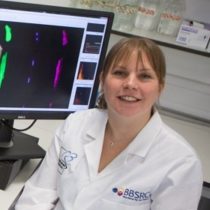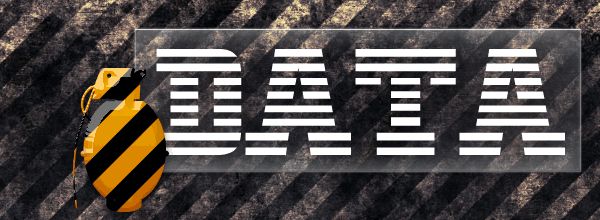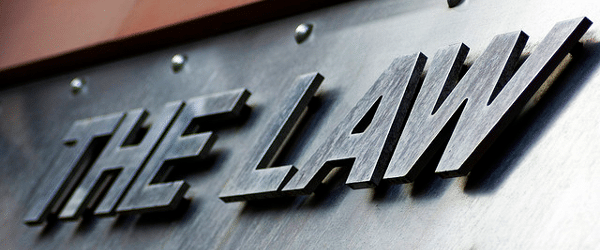For those of you who print out the results that you have acquired from the Flow Cytometer to stick in your lab book, did you know that inkjet printers and cytometers have a shared history?
Flow Cytometry is less than 50 years old and machines today still use some of the same principles as the early machines. Flow Cytometers have evolved over the years to match increases in technology behind lasers, antibody markers and electronics. A 15+ color cytometer is now common place in many labs but the history of the flow cytometer started with many individual discoveries being brought together to make the first cell sorter.
The Early Days of Flow Cytometry
The first application in counting cells automatically while in flow was reported by Moldavan in 1934; this was done by forcing a suspension of red blood cells (RBCs) through a capillary tube on a microscope stage and each passing cell was counted by a photoelectric apparatus attached to the ocular lens.
In 1949, a patent ‘Means for Counting Particles Suspended in a Fluid’, was filed by Wallace Coulter (patent issued in 1953) and this lead to the ‘Coulter Counter’. It accurately counted particles (in this case RBCs) in suspension, using information created when a cell passes through a constricted path (aperture). The presence or absence of a particle led to a detectable change in the electrical characteristics of the path and the machine allowed particle or cell sizing to take place. The ‘Coulter Principle’ is still used in many haematological machines today.
All cytometers today use the principle of laminar flow, where by fluid is flowing in parallel layers with no disruption between the layers; i.e. the core of your sample is surrounded by the sheath fluid within the cytometer. In 1953, Crosland-Taylor used the principles of laminar flow to design a chamber for optical counting of RBCs. An aqueous suspension of RBCs was injected slowly into a faster flowing stream of fluid, which aligned the cells within the fluid. This allowed wider diameter channels to be used and a narrow central stream of particles could be measured. This is the basis of hydrodynamic focusing that is used in almost all flow cytometers today.
How Ink Jet Printing and the Cold War helped Flow Cytometry
To take the history of Flow Cytometry back to bare principles, cell sorting is based on the physics of droplet formation that Lord Rayleigh observed in 1879. Lord Rayleigh discovered that a stream of fluid emerging from an orifice is hydrodynamically unstable and breaks into a series of droplets which, collectively, have a smaller surface area and therefore a lower surface tension. Without an external force applied to the stream, the pattern of droplets is unpredictable. Richard Sweet used these principles in his paper of 1965 in the use of electrostatic charges in inkjet printing. Sweet describes a system that prints with ink that is electrostatically charged and deflected in accordance with the input signal potential, the ink stream is divided into regular uniform drops and the drop charge can be controlled by the input system.
At the same time Mack Fulwyler was working in Los Alamos in Marvin Van Dilla’s lab, monitoring the fallout from atmospheric nuclear weapons’ testing to see if the fallout was appearing in meat, milk and other food products. Mack was tasked to try to find out whether the RBCs going through a Coulter Counter showing a bi-model distribution were in fact two separate populations. He decided the way to do this was to separate out subpopulations of RBCs from whole blood and thought about physically separating them using Coulter principles and mechanical valves.
Realizing this would be a very slow process, he looked around for other ideas and come across Richard Sweet’s paper. Fulwyler adapted Sweet’s principle of electrostatic inkjet droplet deflection for use with a Coulter cell sizing instrument. The cells were measured during passage through a Coulter orifice and the fluid stream broke off into droplets which encapsulated the cells. These droplets could be charged and deflected into the selected collection vessel after passing between plates maintained at a high voltage of opposing polarities. With this, the first cell sorter was born in 1965.
Meanwhile ….. in Stanford ….
Rapid advances were made in the technology behind cell sorters both in the US and in Europe. Wolfgang Göhde designed a fluorescence based flow cytometer (ICPII) in 1968 which was commercialized by Partec in 1969. Meanwhile, Lou Kamentsky and Myron Melamed worked on distinguishing cancer cells from normal cells using differences in the absorption and scattering of light. Kamentsky designed the Rapid Cell Spectrophotometer (RCS), which measured nucleic acid content and cell size.
It was a RCS prototype that Len Herzenberg used, while working in Stanford, as a model for his system that separated out cells stained with weak fluorescence when labelled with fluorescein and rhodamine using a fairly powerful argon laser. Herzenberg, an immunologist who had worked with César Milstein during the discovery of monocolonal antibodies, saw that separating out cells would be extremely helpful in cell biology.
It was Len Herzenberg who coined the commonly used (and often misused) term ‘FACS’ – Fluorescence Activated Cell Sorter. This machine was subsequently commercially produced by Becton Dickinson (BD) and the FACS-1 was launched. BD in fact still owns the trade name FACS. The FACS-1 could measure forward scatter and fluorescence above 530nm. The machine also had a data pulse counter to keep track of the total number of cells counted as well as a tally of the number of cells in each of the two gates or sort regions.
Over the next few years, several companies produced commercially available cell sorters and analyzers. Cytometrists such as Howard Shapiro (in Boston) built their own cytometers, adding multiple lasers and detectors to their machines. The machines evolved to what we are using in the lab today. The now commonly used and recognized term ‘Flow Cytometry’ was only first used in the late 1970’s; PubMed shows that there were 13 publications using the term ‘Flow Cytometry’ in 1977, which can be compared to the 9726 publications in 2012.
The wonderful thing about the field of Flow Cytometry is that many of the key players in creating the history of these machines are still active in the Cytometry world today and can be seen attending conferences such as the ISAC CYTO annual congresses. So come along to a flow meeting and see if you can chat to the men (I’m afraid there weren’t many women involved in the early days) who came up with the ideas and designed the machines that we use in the lab every day.







